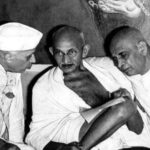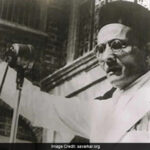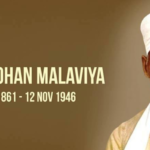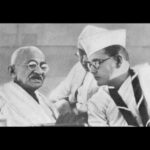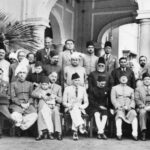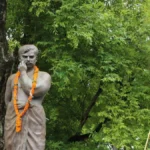This is a very interesting question, and there is no definitive answer to it. The Udarvadi (Moderate) and Krantikari (Revolutionary) techniques were different approaches to the Indian independence movement. The effectiveness of Udarvadi (Moderate) and Krantikari (Revolutionary) techniques in the Indian Independence Movement is a complex and debated topic among historians. Both approaches played significant roles in the struggle for India’s freedom, each with its own strengths and limitations or weaknesses. Let me explain some of them to you and try to comparison of their techniques:
Udarvadi (Moderate) Approach:
The Udarvadi (Moderate) technique was based on the idea of peaceful and constitutional methods to achieve self-rule for India. The main proponents of this technique were the Indian National Congress (INC) and its leaders like Mahatma Gandhi, Jawaharlal Nehru, Vallabhbhai Patel, Maulana Azad, and others. They used tactics like non-violence, civil disobedience, satyagraha, boycotts, negotiations, and petitions to challenge the British rule and demand more rights and autonomy for Indians.
Non-violence, Civil disobedience, Satyagraha, and Boycotts:
Non-Violence also known as “Ahimsa,” advocated for achieving social and political change through peaceful means, avoiding physical harm to others and promoting understanding and empathy.
Civil disobedience involves intentionally breaking certain laws or regulations as a form of protest against perceived injustices. It’s a nonviolent act of defiance that aims to bring attention to a cause and prompt authorities to reconsider their actions.
Satyagraha is a term coined by Gandhi, combining “satya” (truth) and “agraha” (firmness or insistence). It refers to a form of nonviolent resistance that involves holding onto truth and moral principles, even in the face of adversity, to bring about social or political change.
Boycotts involve deliberately refusing to buy, use, or engage with certain products, services, institutions, or events as a way of expressing dissent or exerting pressure for change. Boycotts can be effective in economic and social spheres to bring attention to an issue.
Negotiation and Reforms:
The Udarvadi leaders believed in seeking gradual reforms and negotiations with the British government to achieve incremental changes and greater autonomy for India. They emphasized working within the existing system and used petitions, discussions, and dialogue to convey their demands.
Constitutional Means:
Moderates advocated for constitutional reforms, representation in legislative bodies, and civil rights. They aimed to create awareness about Indian issues within the British Parliament and government, hoping to influence policies through discussions.
Education and Social Reforms:
The Udarvadis focused on education, social upliftment, and the modernization of Indian society. They believed that progress in these areas would eventually lead to political empowerment.
Advantages of Udarvadi (Moderate) techniques
- It appealed to a large section of the Indian population, especially the masses, who were inspired by Gandhi’s moral leadership and charisma. It also gained support from some sympathetic British officials and international public opinion.
- It avoided unnecessary bloodshed and violence, which could have provoked more repression and brutality from the British authorities. It also preserved the unity and harmony among the diverse religious and ethnic groups in India.
- It demonstrated the moral superiority and legitimacy of the Indian cause, and exposed the injustice and hypocrisy of the British rule. It also created a sense of national identity and pride among the Indians.
Disadvantages of Udarvadi (Moderate) techniques
- It was slow and gradual, and required a lot of patience and perseverance from the Indians. It also depended on the goodwill and cooperation of the British government, which was often reluctant or hostile to grant any concessions or reforms to the Indians.
- It faced opposition and criticism from some sections of the Indian society, especially the youth, who were impatient and frustrated with the lack of progress and results. They also felt that this technique was too passive and submissive, and did not challenge the British power directly or forcefully.
- It sometimes led to internal conflicts and divisions within the INC and among its leaders, who had different views and strategies on how to achieve independence. For example, Gandhi and Subhas Chandra Bose had a disagreement over whether to support the British in World War II or not.
Krantikari (Revolutionary) Approach:
The Krantikari (Revolutionary) technique was based on the idea of violent and revolutionary methods to overthrow the British rule in India. The main proponents of this technique were various militant groups like Jugantar, Anushilan Samiti, Ghadar Party, Hindustan Socialist Republican Association (HSRA), Indian National Army (INA), Rashtriya Swayamsevak Sangh (RSS), Hindu Mahasabha, Muslim League, etc. They used tactics like assassinations, bombings, raids, guerrilla warfare, sabotage, propaganda, etc. to attack the British interests and institutions in India.
Direct Action:
Krantikari leaders believed in taking direct and assertive actions against the British rule. They engaged in acts of civil disobedience, protests, and strikes to disrupt colonial governance and create pressure for change.
Armed Struggle:
Some Krantikari groups embraced armed resistance, including attacks on British officials and government infrastructure. They believed that armed rebellion was necessary to achieve swift independence.
Inspiring Masses:
Krantikari leaders aimed to mobilize the masses by invoking a sense of patriotism, self-sacrifice, and nationalism. They used speeches, writings, and propaganda to galvanize public support for the cause.
Advantages of Krantikari (Revolutionary) techniques
- It showed courage and determination from the Indians, who were willing to sacrifice their lives for their country’s freedom. It also created fear and panic among the British authorities and officials, who felt insecure and threatened by the constant attacks.
- It challenged the British power directly and forcefully, and did not rely on their mercy or approval. It also created a sense of urgency and pressure on the British government to end their rule in India as soon as possible.
- It inspired many young Indians to join the freedom struggle, who were attracted by the heroic deeds and charismatic personalities of the revolutionaries. Some of them became national icons and martyrs for their cause.
Disadvantages of Krantikari (Revolutionary) techniques
- It was limited in scope and impact, as it involved only a small number of Indians who had access to weapons and resources. It also faced strong resistance and retaliation from the British forces, who had superior military strength and intelligence.
- It alienated some sections of the Indian society, especially those who believed in non-violence or had vested interests in maintaining the status quo. It also provoked communal violence and hatred among different religious groups in India.
- It lacked coordination and cooperation among different revolutionary groups, who had different ideologies and objectives. They also suffered from internal conflicts and betrayals within their ranks.
Effectiveness Comparison:
The effectiveness of these techniques varies based on different perspectives:
- Immediate Impact: Krantikari actions often garnered more immediate attention due to their dramatic nature, but their limited scale and sometimes violent nature could lead to suppression by the British authorities.
- Long-term Impact: The Udarvadi approach contributed to building a broader base of educated and politically aware individuals who could sustain the movement over the long term. Their efforts also led to the formation of organizations that played a pivotal role in later stages of the independence struggle.
- Unity and Diversity: The movement’s success was a result of the synergy between various approaches. While Udarvadi methods laid the foundation, Krantikari actions added urgency and pushed the British administration to address Indian grievances.
As you can see, both techniques had their pros and cons, and they contributed to the Indian independence movement in different ways. Some historians argue that both techniques were complementary rather than contradictory, as they put pressure on the British from different angles. Others argue that one technique was more effective or preferable than the other depending on the context or situation.
In conclusion, both Udarvadi and Krantikari techniques had their merits and limitations. The Indian Independence Movement’s success was a result of the interplay between these diverse approaches, with each contributing to the broader goal of achieving independence from British colonial rule.
Ultimately, it is up to you to form your own opinion on this question based on your own research and analysis. I hope I have given you some useful information on this topic. Thank you for your interest in learning about the Indian independence movement.😊

